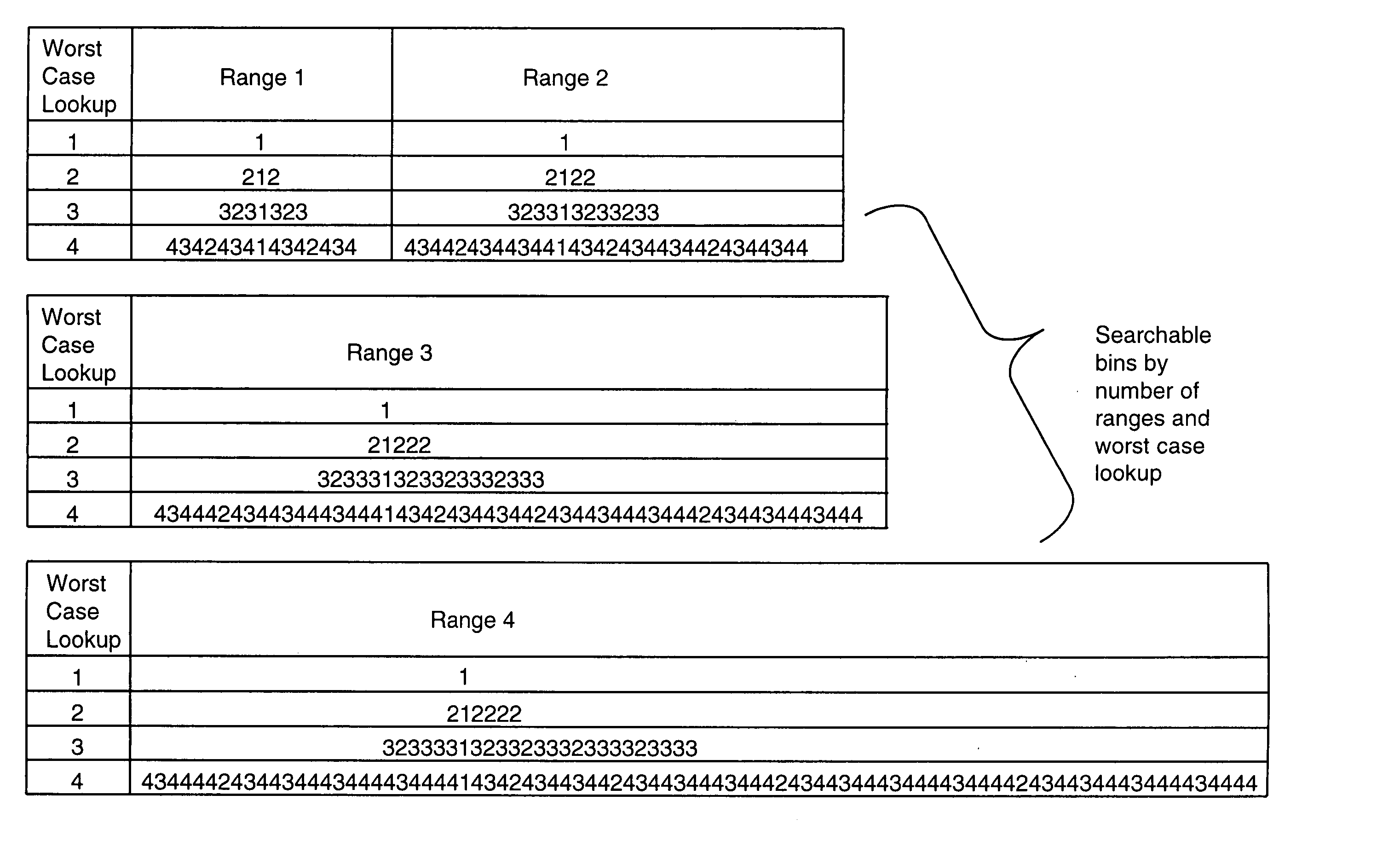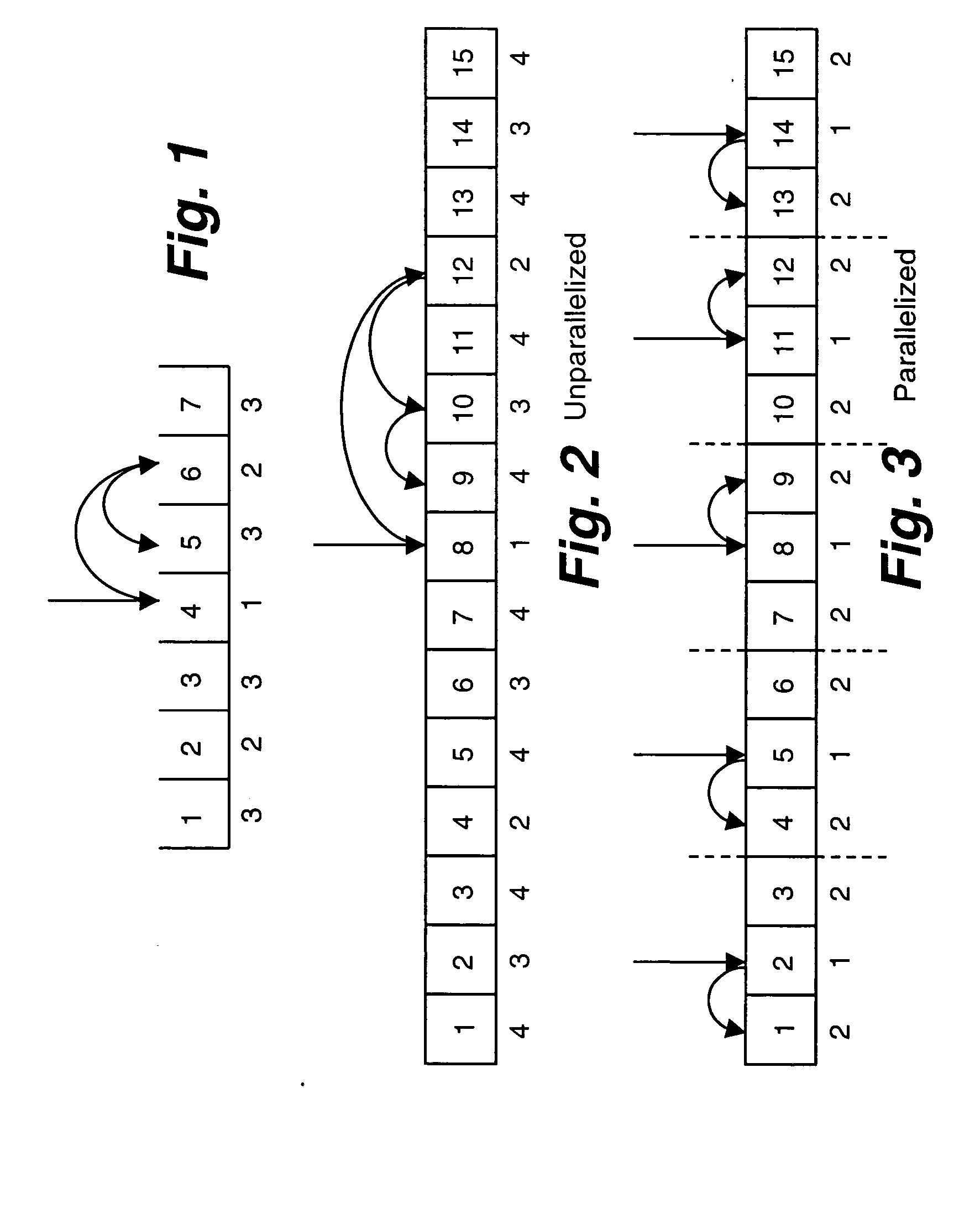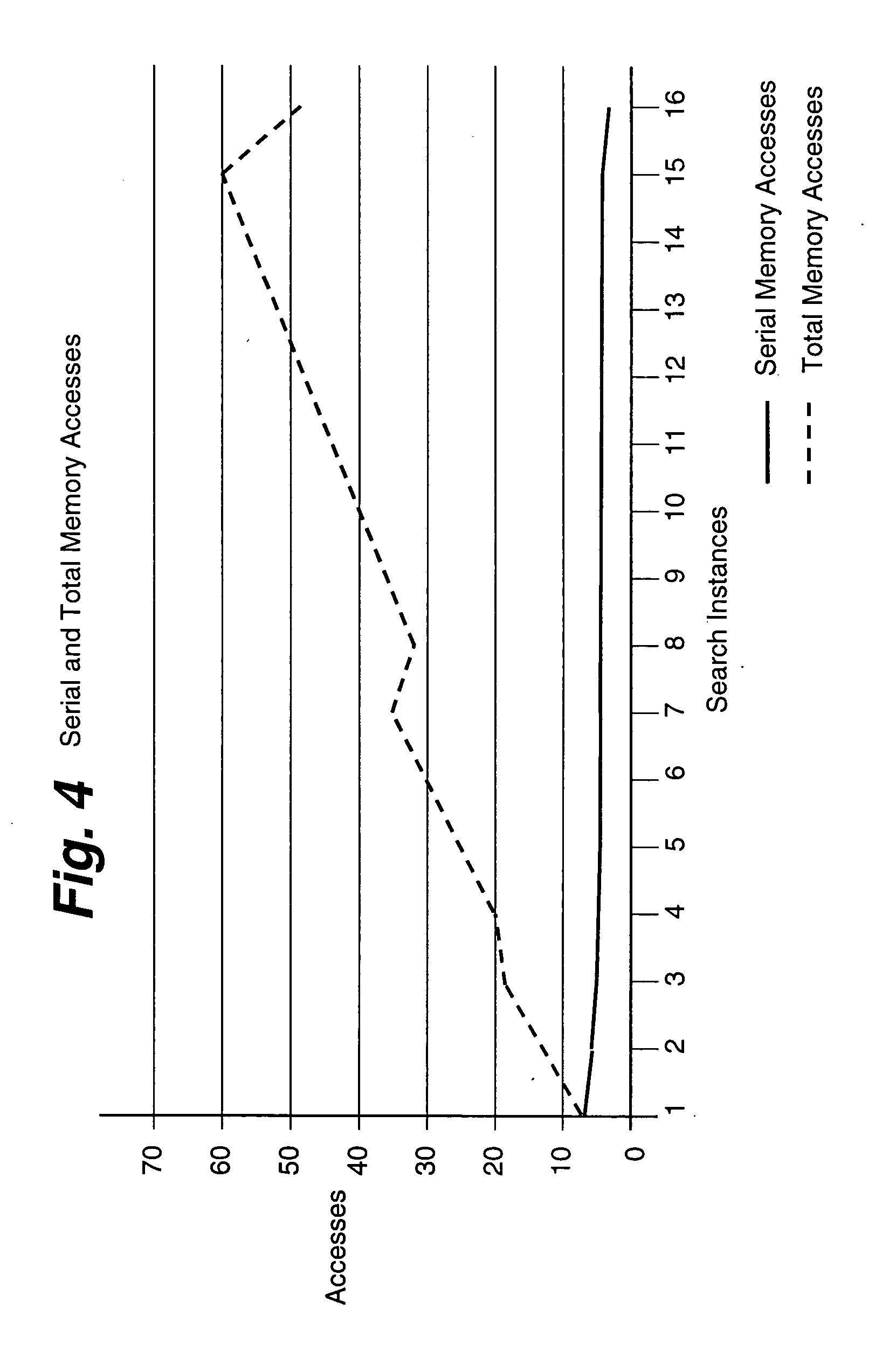Parallel asymmetric binary search on lengths
a binary search and asymmetric technology, applied in the field of binary search techniques, can solve the problems of high frequency of collisions, inability to scale to longer addresses, and inability to search long addresses, so as to reduce the latency of search and scale better to longer addresses.
- Summary
- Abstract
- Description
- Claims
- Application Information
AI Technical Summary
Benefits of technology
Problems solved by technology
Method used
Image
Examples
Embodiment Construction
[0041] As routers reach higher speeds, existing IP forwarding algorithms may not be able to scale to meet demand due to memory constraints, such as latency, size, etc. Parallelized algorithms enable a series of dependant memory accesses to be performed in parallel by removing the dependencies between subsequent memory accesses. Enabling parallel memory accesses allows for an overall reduction in lookup latency, which can be accomplished by issuing parallel memory accesses to several memory banks at once, or issuing several memory accesses to a single memory bank such that the latencies of these memory accesses overlap. One major issue with the majority of IP forwarding algorithms, however, is that they are difficult to parallelize. Tree searches, for example, cannot be parallelized as the decision of which branch of a tree to follow depends on the path through the tree that has been taken up to that point.
[0042] The invention is a series of three improvements over the techniques de...
PUM
 Login to View More
Login to View More Abstract
Description
Claims
Application Information
 Login to View More
Login to View More - R&D
- Intellectual Property
- Life Sciences
- Materials
- Tech Scout
- Unparalleled Data Quality
- Higher Quality Content
- 60% Fewer Hallucinations
Browse by: Latest US Patents, China's latest patents, Technical Efficacy Thesaurus, Application Domain, Technology Topic, Popular Technical Reports.
© 2025 PatSnap. All rights reserved.Legal|Privacy policy|Modern Slavery Act Transparency Statement|Sitemap|About US| Contact US: help@patsnap.com



